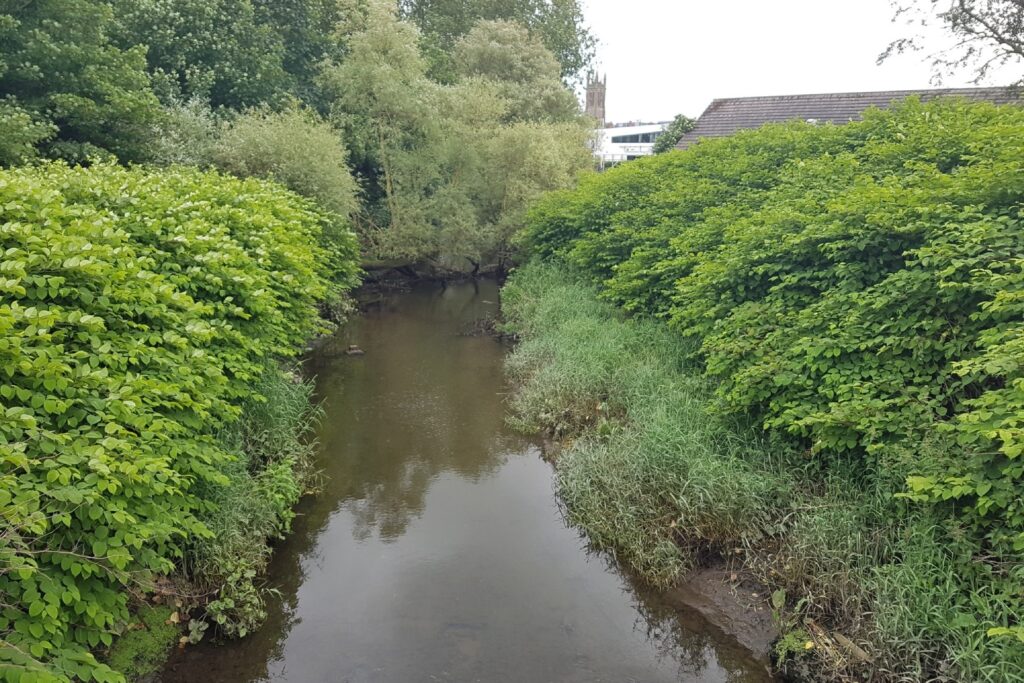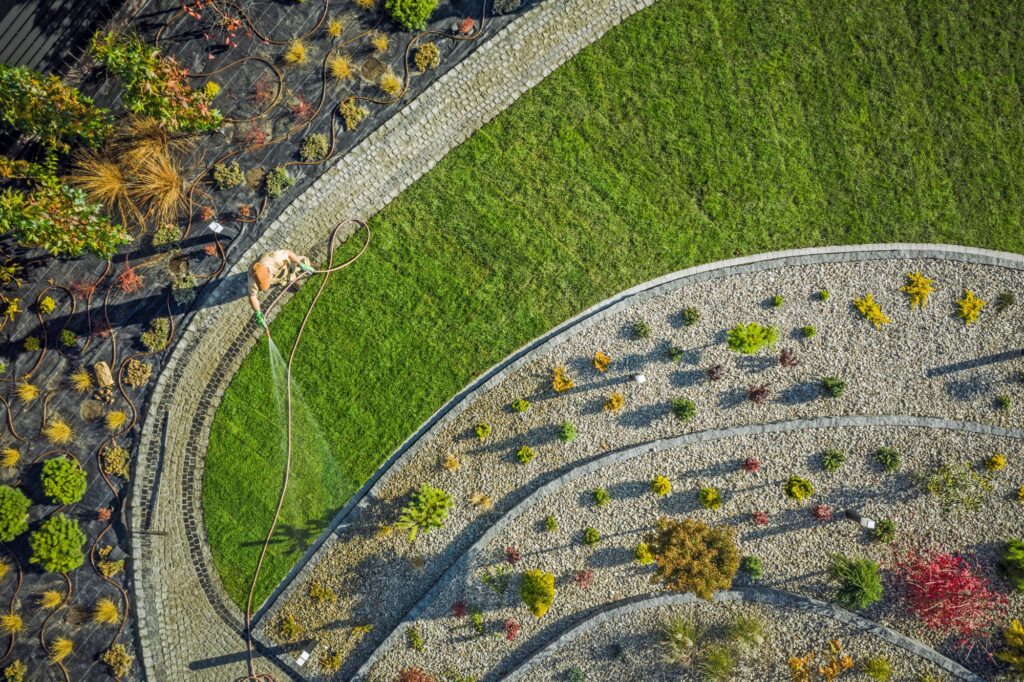- Services
- Invasive Plant Eradication
Japanese Knotweed presents significant challenges. It is illegal to cause or allow the plant to spread and its presence can complicate property transactions making it difficult to secure a mortgage.
The plant originated from Japan where its growth is naturally controlled by predators. In Europe and the UK, Japanese Knotweed poses a significant threat and may cause structural issues as it can penetrate cement and clay, causing cracks in the foundations of buildings and walls. Its relentless ability to spread and grow makes it a major concern for property developers and homeowners.
Conventional methods of eradication, such as the “dig and dump” approach, can be extremely expensive, and require removing not only the plant but also the soil up to 7 meters horizontally and 3 meters vertically from the plant. Furthermore, the excavated material must be transported to a licensed facility, therefore increasing costs. Another traditional option is the “dig and bury” method, which involves containing the plant on-site within an excavated cell line with a root barrier membrane. This solution is the least environmentally friendly and will not have removed the source of the Japanese Knotweed.
We offer traditional and cutting-edge treatment options to effectively address your issue with Japanese Knotweed. We utilise proven techniques and guarantee the permanent eradication of Japanese Knotweed. All projects are covered by ATG Group’s insurance with a standard warranty that offers a 3-year coverage for a site.
Our innovative Eraginate® treatment process is the most cost-effective and quickest method to eradicate Japanese Knotweed. Eraginate® revolutionises traditional methods by minimising the amount of material sent to landfill and accelerating the eradication process, resulting in cost reduction.
With over 130 projects completed in the last 5 years, our experience shows that, on average, the cost of Eraginate® saves our clients at least 60% compared to traditional methods, such as dig and dump.


Stem injection stands out as an economical treatment option that offers significant cost advantages, especially when time is on your side. This method involves a series of treatments spread across multiple growing seasons, typically spanning up to three years. Its cost-effectiveness and gradual approach make it a compelling option for low-cost, sustainable results.
Be assured that we possess the skills and expertise required to deliver the best solution tailored specifically to your needs!
To assist you further, we are pleased to offer a site survey for invasive species in the UK and Ireland, the cost of which will be reimbursed in the event that you appoint us. This survey will result in a bespoke invasive species treatment plan tailored to your specific needs.
Contact us today to schedule a site survey and let us put an end to your Japanese Knotweed issues!
Eraginate®
Our innovative Eraginate® treatment process is the most cost-effective and quickest method to eradicate Japanese Knotweed. This value engineered solution stands as a testament to sustainability. Eraginate® transforms conventional methods by significantly reducing the amount of materials sent to landfill. We achieve this by completing a two-part screening and picking process that separates the Japanese Knotweed material from the soil. We dispose of the Japanese Knotweed plant matter that was picked at an appropriately licensed waste facility and fragment the remaining soils to treat any residual matter plant. The resultant soils are retained on-site, therefore we significantly reduce the volume of material sent to landfill. Moreover, we offer a warranty against the regrowth of the Japanese Knotweed when using Eraginate®. This makes it possible for you to reuse the treated soils on-site, ultimately resulting in cost savings and restoring the natural balance of the environment.
Dig and Dump
This process involves identifying and marking the areas impacted by the invasive plant, followed by excavating the soil and then transporting it to a licensed facility. Although this method is quick, the process can be costly and environmentally taxing due to the amount of excavated material, additional transport requirements and often the need for replacement fill material.
Dig and Bury
Although the dig and bury method is less expensive than dig and dump, it does not remove the liability from the site. This approach involves excavating all the contaminated soil with invasive plants and then burying it on-site. The process starts with the identification and marking of the areas impacted by the invasive plants, excavating the affected soil carefully and burying it at an appropriate depth on-site. This method also requires sufficient space to allow for the excavation of a suitably sized cell to accommodate the Japanese Knotweed-impacted soils. While this method is quick, it can be costly due to the preparation and lining of the cell and disposal of associated soils. Moreover, this method does not remove the contaminated material from the site.
Root Barrier Membrane
This process acts as a protective shield against regrowth on site boundaries or other areas where removal or treatment is not possible to contain the Japanese Knotweed. By employing this method, we create a mechanism that prevents invasive plants from neighbouring sites from invading the treated area.
Stem Injection
This method involves cutting the visible plant growth above the soil and injecting our specialised herbicidal mix into the remaining stems. This chemical mixture targets and effectively eliminates invasive plants while minimising environmental impact and collateral damage to the vegetation in the treated area.
Spray Treatment
This technique involves spraying a foliar application onto the invasive plant. Although this method is cheap and stunts growth, due to the time periods involved, we only recommend it for domestic projects.

and Ireland



Eastern Europe


